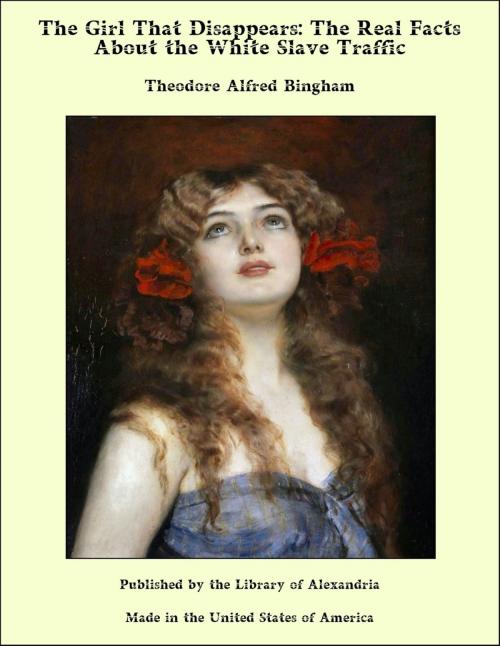The Girl That Disappears: The Real Facts About the White Slave Traffic
Nonfiction, Religion & Spirituality, New Age, History, Fiction & Literature| Author: | Theodore Alfred Bingham | ISBN: | 9781465606891 |
| Publisher: | Library of Alexandria | Publication: | March 8, 2015 |
| Imprint: | Language: | English |
| Author: | Theodore Alfred Bingham |
| ISBN: | 9781465606891 |
| Publisher: | Library of Alexandria |
| Publication: | March 8, 2015 |
| Imprint: | |
| Language: | English |
DURING my three and a half years as Commissioner of Police of Greater New York, no experience affected me more than an incident which in itself was considered worth no more than a paragraph in the newspapers. Identically the same incident has happened in a dozen cities, allowing, of course, for variation in details. It was at the hour when the city was on its way home from work. Crowds of men and girls filled the sidewalks and overflowed the streets. The trolley cars clanged their way slowly, drivers of drays and wagons kept up a chorus of warning shouts as they threaded their horses in and out the procession. Even with all the care that drivers and motormen can exert, accidents happen. On this particular day a girl darted in front of a trolley car. She was ground under the wheels. Muscular arms lifted the heavy trucks. Some one sent in a call for an ambulance, but before its gong was heard in the distance the girl was dead. As a rule it is not impossible to identify almost at once, even an obscure girl thus suddenly cut off, but in this case search of the girl's body revealed not one single clue to her identity. She was literally nameless and unknown. The body was removed to the morgue and an appeal sent to the newspapers in the hope of identification. And the most terribly sad feature of the tragedy was the number of men and women who flocked to the morgue fathers and mothers and relatives of girls who had "disappeared." They had read in the newspapers of the accident, and despite disparities in the printed description and the appearance of their own lost one, they came to the morgue in the fearful hope of finding story is one of many that could be told to illustrate the sinister fact that every year thousands of young girls disappear from their homes in the cities or go from the small towns to the cities and drop out forever from all knowledge of their families.
DURING my three and a half years as Commissioner of Police of Greater New York, no experience affected me more than an incident which in itself was considered worth no more than a paragraph in the newspapers. Identically the same incident has happened in a dozen cities, allowing, of course, for variation in details. It was at the hour when the city was on its way home from work. Crowds of men and girls filled the sidewalks and overflowed the streets. The trolley cars clanged their way slowly, drivers of drays and wagons kept up a chorus of warning shouts as they threaded their horses in and out the procession. Even with all the care that drivers and motormen can exert, accidents happen. On this particular day a girl darted in front of a trolley car. She was ground under the wheels. Muscular arms lifted the heavy trucks. Some one sent in a call for an ambulance, but before its gong was heard in the distance the girl was dead. As a rule it is not impossible to identify almost at once, even an obscure girl thus suddenly cut off, but in this case search of the girl's body revealed not one single clue to her identity. She was literally nameless and unknown. The body was removed to the morgue and an appeal sent to the newspapers in the hope of identification. And the most terribly sad feature of the tragedy was the number of men and women who flocked to the morgue fathers and mothers and relatives of girls who had "disappeared." They had read in the newspapers of the accident, and despite disparities in the printed description and the appearance of their own lost one, they came to the morgue in the fearful hope of finding story is one of many that could be told to illustrate the sinister fact that every year thousands of young girls disappear from their homes in the cities or go from the small towns to the cities and drop out forever from all knowledge of their families.















